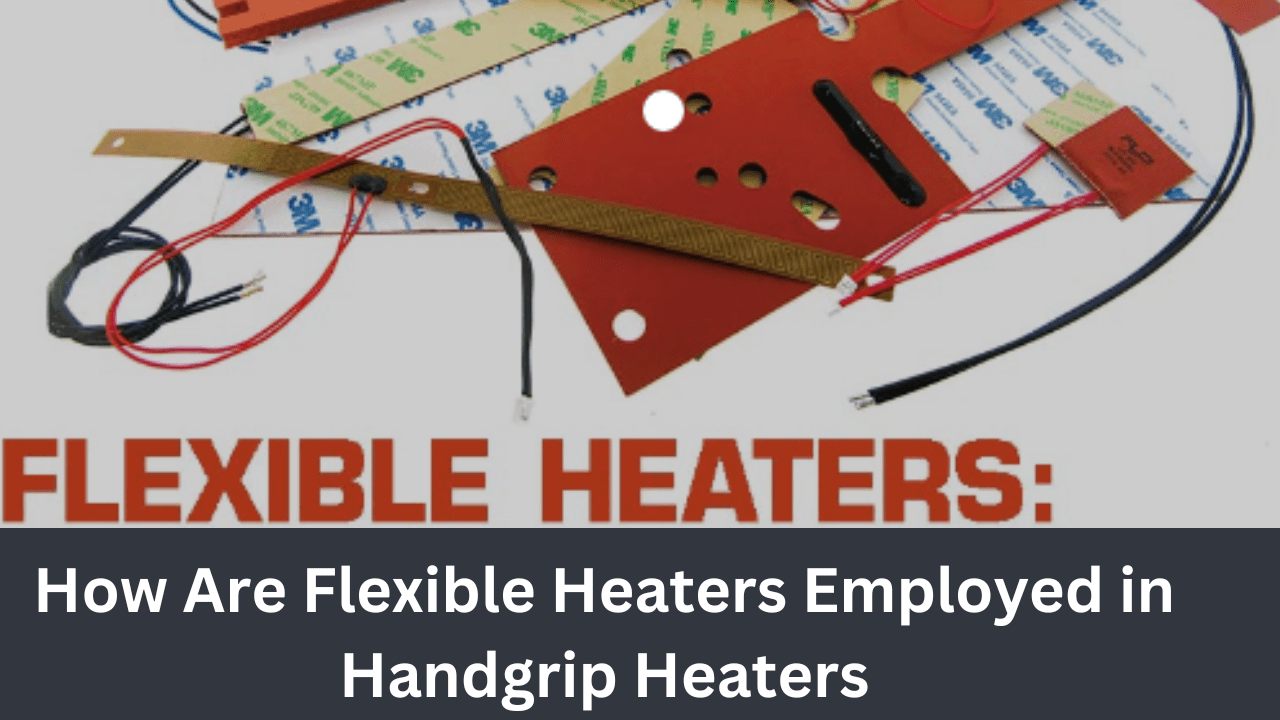Table of Contents
The optimal fitting method for flexible heaters might help avoid failures in functioning components and processes. A business must also consider the setting in which the flexible heater elements will be employed.
Flexible heaters deliver heat to the required components, regardless of their dimensions or shape. It is flexible and may be twisted around the substrate to heat particular parts.
The flexible heater’s attachment and whether the installation technique will provide a robust and long-lasting bond can all be affected by:
- Rain
- Snow
- Intense sunlight
- Abrupt temperature changes
Although some installation methods depend on heat transmission capabilities, others are heat production-dependent. Here, we’ll review the most prominent ways to use flexible heaters in handgrip heaters. These techniques will work with a wide selection of heater applications.
What Are Flexible Heaters?
Any heater that can be bent or stretched to follow the contours of the substrate that needs heating is referred to as a flexible heater. These heaters can be wire wound, etched, or screen printed. There are many different kinds of flexible heaters.
- Transparent heaters
- Heating tapes
- Polyimide film heaters
- Carbon-printed heaters
- Silicone rubber heaters (either etched or wire winding)
All these heaters are available in a wide range of configurations, including the option to alter the size, thickness, shape, and size, as well as the addition of components that can enhance the functionality of any application. Flexible heaters have features that make them valid, like being:
- resistant to chemicals and humidity
- durable
- dependable
- accurate
- efficient
Flexible heaters have a diverse range of commercial, industrial, and security applications. It’s because they may be fused or attached to any kind and size of the surface to the point of being flexed in use. Flexible heaters may run at temperatures as high as 500°F (260°C) and 392°F (200°C). Moreover, they are appropriate for extreme climates and vacuum situations.
Any heater application needs effective and efficient heat exchange to be helpful. The most effective way to ensure that heat energy leaves the heater is to adhere flexible heaters to the substrate that needs to be heated.
There is only one better method to use if the heater is installed and built such that there is uniform contact between the heater and the surface to be warmed. Various sensors and controls may be integrated into the flexible heater.
Best 4 Expensive Methods to Use or Mount the Flexible Heaters in Handgrip Heaters
Flexible heaters are appliances that can be twisted to fit the curvature of the heated thing. The interior heating elements of the majority of items can be bent around small radii without suffering any damage. These characteristics of the heater are crucial for providing an efficient heat source in a variety of applications, including:
- Electronics
- Medical equipment
- Industrial uses
Flexible heater producers often mount their products using one of four primary techniques:
- Pressure-sensitive adhesive (PSA)
- Factory vulcanized mounting
- Silicone RTV bonding
- removable mounting attachments
While some mounting techniques require heat transfer capabilities, others depend on the amount of heat produced. Here we will discuss the most glamorous ways to use flexible heaters in handgrip heaters. These methods will fit the most flexible heater applications.
1. PSA (Pressure Sensitive Adhesive)
Flexible heaters with pre-attached adhesion surfaces are used with pressure-sensitive adhesive. The adjustable heater is attached to the component, while the safety backing is pulled away. It could be coated on both sides or have a particular adhesion side.
PSA fitting methods for flex heaters are better suited to handgrip heaters, smooth, flat substrates, or surfaces with a slight curve. It is the quickest and most affordable installation technique available.
A rubberized roller must be employed to prevent air bubbles from being trapped underneath when using a silicone rubber heater.
This trapping of air bubbles could lead to hot spots or an early failure of the flexible heater. Installations that emit excessive heat outputs above 150°C (300–400°F) for Kapton or polyimide heaters or 205°C (400–500°F) for silicone rubber heaters may need high thermal PSAs for use in handgrip heaters.
2. Factory Vulcanized Mountings
The flexible heater is attached to the component like a handgrip heater using a suction oven in factory vulcanized fittings. The adjustable heater adheres to the part because it is a suitable method for metal substrates like stainless steel, anodized aluminum, or black anodized aluminum.
The flex heater, like a silicone rubber heater, infiltrates the metallic substrate’s microstructure, so this anchoring method offers a durable attachment.
Whenever you desire the best heat transmission capabilities, factory-vulcanized methods are suggested since the flexible heater is affixed to the component, like the handgrip heater. It leaves nothing in the way of the contact point. Since it is enduring, the connection is also powerful.
3. Silicone RTV (Room Temperature Vulcanizing)
With silicone RTV, the flexible heaters are attached to the product’s surface, like a handgrip heater. Using a silicone superglue cured at average temperatures and ambient humidity.
It is placed on the silicone rubber heater. It is made of a one-part sticky (or a two-part adhesive made of epoxy and catalysts that are put together).
The heater is then inserted into the handgrip heater. Finally, a tiny roller rolls over it to end any air bubbles and fasten the heater.
Silicone RTV is appropriate for elements in fields where high temperatures will be generated during use. It is suitable for heaters capable of reaching temperatures of 260 °C (500 °F). This mounting style provides greater flexibility because it can withstand
- adverse weather
- mold
- mildew
- humidity
This style of mounting is good for hand grip heaters and applications that use large flex heaters when the two-part bonding method silicone RTV is used.
4. Detachable Mounting Attachments for Heaters
When a persistent installation is not possible or desirable, the flexible heater can be easily removed thanks to detachable fastening attachments. These fittings could include
- Velcro fasteners
- snap grommets
- nylon straps
- silicone straps
Flexible heaters that are attached to parts of hand grip heaters that might have sharp cuts or imperfections are often best suited for fastening attachments. These fasteners keep the heater from rubbing against the surface of the material. This keeps the heater from getting damaged or lost since the connections are easy to use.
Ultimately, these fasteners are ideal for situations where the flexible heater must be installed. One aspect to keep in mind is that some fastening connections using straps may stretch after prolonged use. Additionally, Velcro fasteners may pick up foreign dirt and particles like hair, fabric fibers, or dust.
Final talk
Flexible heaters deliver heat directly to the required components, regardless of their dimensions or shapes. It is flexible and may be twisted around the substrate to heat particular parts.
Finally, you have to choose the installation technique that is most suitable for the purpose. Moreover, it can prevent a failure in the operational components of flexible heaters.




